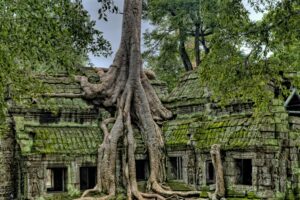
Preserving Toledo’s Historic Woodlands
A new initiative aims to restore the area’s historic tree cover. That’s good news for the environment, as well as for the community.
Ancient woodland tends to be managed by a regime of felling and regrowth, known as coppicing. This exploits the natural property of many trees to regenerate from stump sprouts and root suckers – an ability that has evolved over time.
1. Sycamore
As part of the riverfront woodlands in their native habitat, sycamores create an arch of branches that provide cover and shelter. Their large girth and thick, smooth bark make them easy to identify in winter, and their wide canopies can help you locate a stream or river bank from a distance.
Sycamores are very tolerant of poor soils, and often thrive in the poorly drained mucky or peaty bottoms of streams. In these environments, sycamores are often the tallest trees in …
